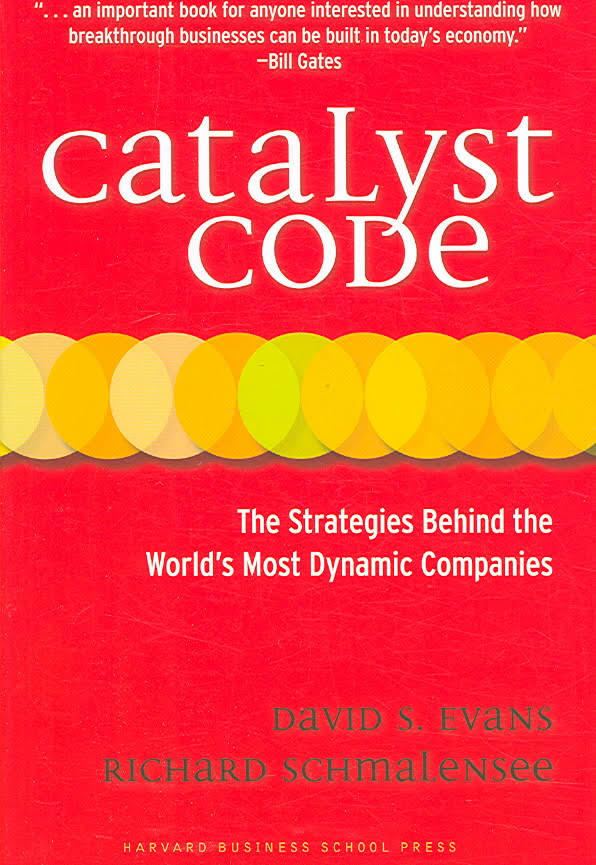7.4 /10 1 Votes7.4
Media type Hardback ISBN 978-1-4221-0199-5 Originally published 9 May 2007 Subject Strategic management | 3.7/5 Goodreads Publication date May 9, 2007 Pages 228 pp OCLC 76073300 | |||||||||||||||||||||||||||||||||
 | ||||||||||||||||||||||||||||||||||
Publisher Harvard Business Publishing Similar Invisible Engines: How Soft, Paying with Plastic: The Digital Re, Handbook of Industrial Organization, Markets for Power, Markets for Clean Air: The US | ||||||||||||||||||||||||||||||||||
Catalyst Code: The Strategies Behind the World’s Most Dynamic Companies is a book by Market Platform Dynamics founder David S. Evans and MIT economist (and former dean of the MIT Sloan School of Management) Richard L. Schmalensee published in 2007.
Overview
Catalyst Code is the first full-length book to examine the unique strategic problems faced by economic catalysts (or multi-sided platform businesses), enterprises that add value by facilitating interactions between two or more groups of customers who need each other in some way. Some familiar examples of economic catalysts are matchmakers old and new, auction houses, securities markets, magazines, search engines, shopping centers, credit and debit cards, and software platforms. (The authors analyzed the last two of these in the books Paying with Plastic and Invisible Engines, respectively.)
Catalyst Code draws on recent advances in economic theory, begun by Jean-Charles Rochet and Jean Tirole, and extensive interviews conducted by the business strategy consulting firm Market Platform Dynamics, with which both authors are affiliated. The book explains how economic catalysts differ from ordinary, single-sided businesses and presents a new six-part framework for devising strategies for launching and sustaining successful catalyst businesses.
Topics discussed include:
